The Making of the Christian Global Mission, Part 2: Missions to the First Americans
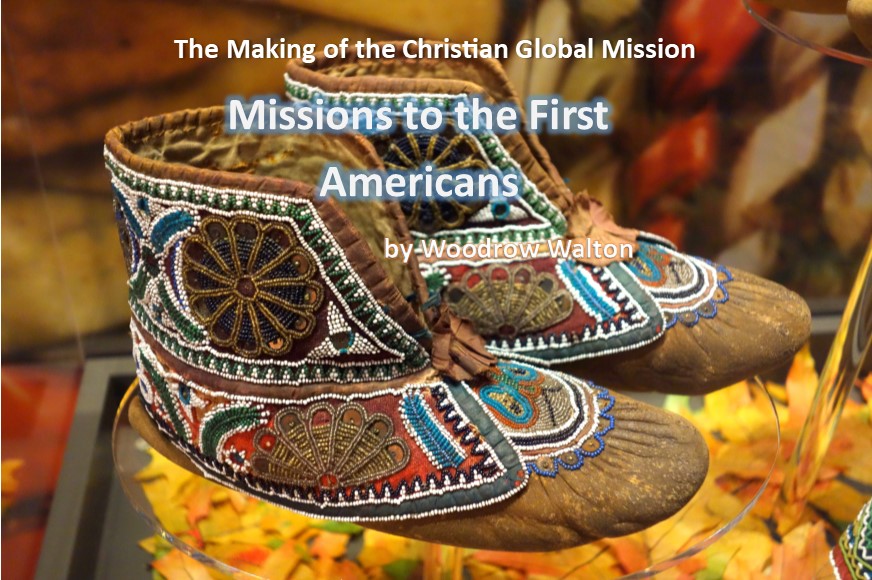
Christian historian Woodrow Walton continues his investigation into the origins of the modern movements that inspired Christians to go and share the mission and message of Jesus throughout the world.
The Making of the Christian Global Mission
Part 2: Missions to the First Americans
Before proceeding to dealing with the spread and growth of the Christian gospel into the eighteenth and nineteenth centuries, there is also the need to look at the contribution of a lone figure of Norman-French heritage who as a Jesuit missionary opened the pathway for mission and evangelism in North America. In his travels in Canada, he not only spread the gospel among a particular native American people, the Hurons, but also lived among them for several years and penned the lyrics of the first Christmas carol written and composed in North America. This song was later translated from the Huron language by Jesse Edgar Middleton in The United Methodist Hymnal, No. 244 “Twas in the moon of wintertime.”
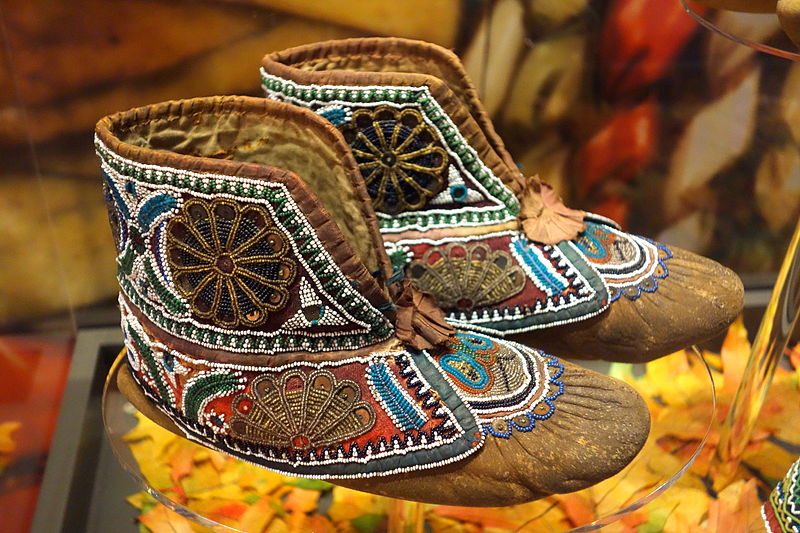
Huron moccasins (circa 1880 CE) on display at the Bata Shoe Museum, Toronto, Ontario, Canada.
Image: Wikimedia Commons
I want to introduce the figure of Jean de Brébeuf, whose biography Saint among the Hurons: The Life of Jean de Brébeuf was first written in 1949 by Francis X. Talbot and published by Harper & Brothers and most recently republished in 2018 by Ignatius Press. Brébeuf was a Norman from the north of France, the descendant of Scandinavians who invaded northern France in the early 1500s. He was born in what is now know as Condé-sur-Vire, March 25, 1593, in the diocese of Bayeux in eastern Normandy. In 1617, at the age of 24, after finishing his schooling and settling family affairs, he applied for entry into the Society of Jesus and thereby became a part of the missionary-minded Jesuits, an independent minded order not initiated by the Church but by Ignatius Loyola and which had gained later recognition as a missionary arm of the church. Even after gaining such authorization, the Jesuits were allowed to function as an independent mission arm of the Roman Catholic Church under its own umbrella, the Society of Jesus. This same independence also affected the relationship of the Jesuits with the different countries in which they operated. In some cases, they were regarded with suspicion from the political realm of the countries in which they served as missionaries of the Gospel. Mexico was one such country as were Brazil and Argentina in South America.
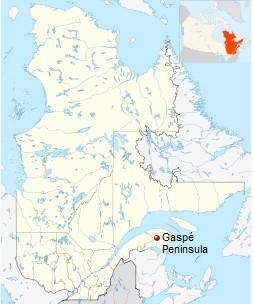 It was in 1625 that Jean de Brébeuf learned that the Jesuits were opening a mission in New France (Canada). This was five years after the founding of the Plymouth Plantation in New England. The year before, in October of 1624, Brébeuf met two Récollet [a Franciscan order] missionaries just returned from the New World.
It was in 1625 that Jean de Brébeuf learned that the Jesuits were opening a mission in New France (Canada). This was five years after the founding of the Plymouth Plantation in New England. The year before, in October of 1624, Brébeuf met two Récollet [a Franciscan order] missionaries just returned from the New World.
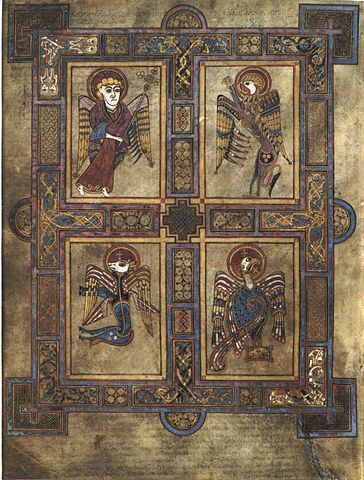
This article is part of The Gospel in History series by Woodrow Walton.
Image: The Books of Kells by way of Wikimedia Commons.
In March of 1625, with full royal assent, the Viceroy of Quebec issued a decree authorizing the establishment of a residence in Quebec and other parts of New France for the Jesuits and to associate its members with the Récollets in the conversion of the “savages.” On April 24, 1625, after several delays resulting from opposition by the Montmorency Company in both Paris and Rouen to the proposal, the authorization came through, and Brébeuf and the other missionaries crossed over into the open waters of the Atlantic for New France (Canada). They entered into Canada by navigating around Cap Gaspé and through the Gulf of St. Lawrence and to Quebec. From 1625 to 1649, the year of his death at the hand of the Iroquois, de Brébeuf labored among the Huron who lived along the borderlands of the Great Lakes all the way from southern Canada to Michigan’s shoreline to Sault Ste. Marie.
The point of this short excursus is that the Jesuits did not engage in general evangelism among Native Americans but focused their attention on specific people groups, both in Canada and Brazil. The 1986 motion picture The Mission portrayed the Jesuit work and also their conflict with the political regime of the Portuguese which governed Brazil at the time of the Jesuit mission work. The independence of the Jesuits in their missionary evangelism also brought them into an adversarial relationship to the Spanish viceroys which governed out of Mexico City.
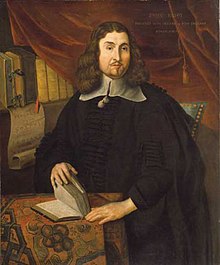
John Eliot
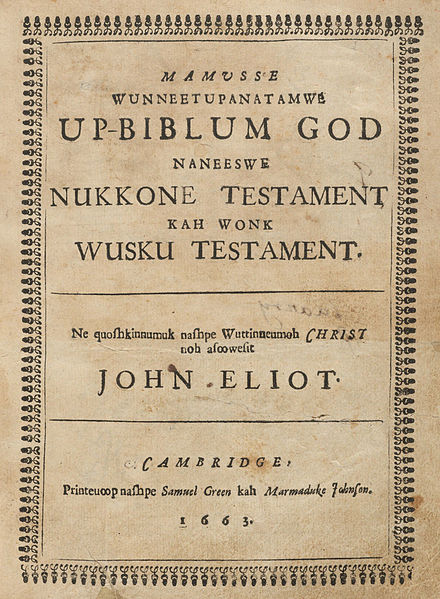
Mamusse Wunneetupanatamwe Up-Biblum God, also known as The Algonquian Bible.
Image: Wikimedia Commons
Concurrent with Brébeuf in North America was John Eliot in the Massachusetts Bay Colony, the first Puritan missionary to Native Americans who concentrated on the Algonquian language of the local Massachusetts. Helping him learn the language was a young Native American named Cockenoe. The youth had been captured in the Pequot War of 1637 and was a servant of an Englishman named Richard Collicot. Eliot later wrote in his diary that Cockenoe “was the first that I made use of to teach me words, and to be my interpreter.” Cockenoe could not write English but he could speak it as well as he could speak Algonquian. He was able, thereby, to help Eliot translate the Ten Commandments, the Lord’s Prayer and other portions of the Bible and prayers. His first attempts at sharing the gospel with the Native American in 1646 were meager, if not failures, but eventually met with success. He also became able to produce printed publications for the Indians in their own language. In 1663, Eliot completed a translation of the whole Bible into the Massachusetts language, Mamusse Wunneetupanatamwe Up-Biblum God. The printer who did the printing issued 1000 copies on the first printing press in the American colonies.
Three years later, in 1666, Eliot published The Indian Grammar Begun.
Through the succeeding years, fourteen towns of “praying Indians” grew up in Massachusetts Bay Colony, the best documented of which being the one at Natick, Massachusetts. Other missionaries also established praying Indian towns, one of whom, Samson Occom, was himself half Mohegan.
Eliot and his wife, Hanna, had six children, five sons and one daughter. Two sons, John Eliot, Jr., and Joseph Eliot, both became pastors of churches themselves. Joseph Eliot, a pastor in Guilford, Connecticut, and his wife, were parents of Jared Eliot, who also became a minister of the gospel was also a noted agricultural writer.
David Brainerd is another significant figure, not only in mission among Native Americans but also upon the future development of the missionary enterprise world–wide. Brainerd was born April 20, 1718, in Haddam, Connecticut, the son of a Connecticut legislator, and his wife Dorothy. Although he died young at the early age of 29 from tuberculosis on October 10, 1747, his ministry intersected with that of George Whitefield, Jonathan Edwards, Gilbert Tennent, James Davenport, and Jonathan Dickinson.
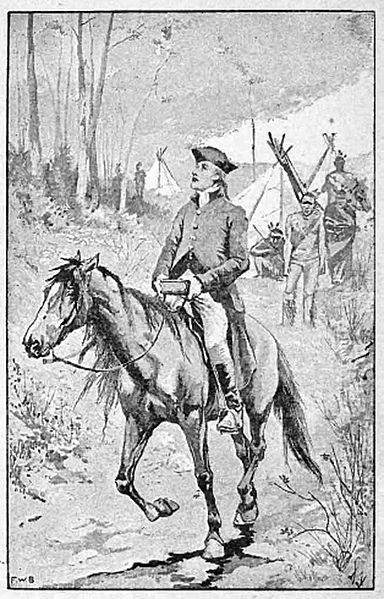
From David Brainerd, the apostle to the North American Indians, published in 1891.
Image: Wikimedia Commons
In 1742, at the age of 24, he was licensed by a group of Presbyterians known as the “New Lights” which included such figures as Barton Warren Stone, Jonathan Dickinson, and the initiators of the Society in Scotland for Propagating Christian Knowledge, the first-known organized missionary society.
Brainerd’s ministry in New Jersey, New York, Massachusetts, and Long Island became an inspiration for William Carey, Brainerd’s cousin, James Brainerd Taylor (1801-1829), and the 20th century’s Jim Elliot who ministered among the Aucas (Huaorani) in Ecuador, South America. Brainerd was the forerunner of the evangelical missionary enterprise[1] which emerged with William Carey in England and the Haystack Prayer Meeting of 1810 in Massachusetts.
Thomas Bray, the founder of the Society for the Propagation of the Gospel in Foreign parts and also the Society for the Promotion of Christian Knowledge, supported the ministry of Whitefield both in England and the English colonies which were to become known as the United States of America. Because the focus was upon North America and the British isles, the site of the activities was not global but British North America. A world, or global focused evangelical witness, first became reality with the initiation of the Particular Baptist Society for the Propagation of the Gospel Among the Heathen in 1792 in Kettering, England, where 12 ministers signed an agreement to support the missionary work of William Carey and John Thomas in Bengal, India. Carey and Thomas were first sent out in 1793. To this day, William Carey is considered to be the initiator of the Christian world mission with schools and organizations and a book publishing house named after him in both the United States and Canada. This first missionary society is still in operation to this date. In A.D. 2000, its name was changed to the Baptist World Mission and presently supports over 350 workers in 40 countries.
PR
Notes
[1] The reason to not consider George Whitefield and John Wesley as the forerunners of the evangelical missionary enterprise is that both Whitefield and John Wesley were more revivalists than missionaries. Their preaching missions were to revive Christian faith in believers and reinvigorate a Christian witness that would lead others to faith in Christ.
Category: Church History, Summer 2020


